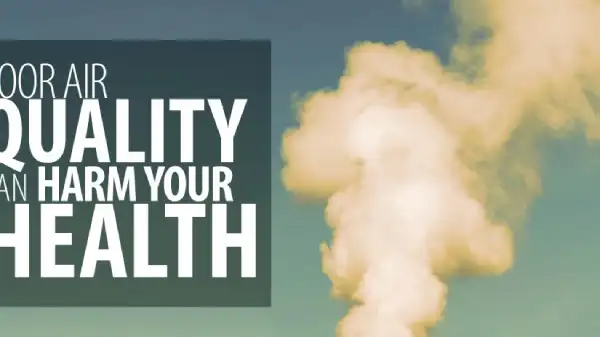
According to Rainbow Restoration, poor indoor air quality can significantly impact your health.
|
The amount of time you spend indoors may surprise you – 90 percent of your work, school, and home time is spent indoors. Maybe not so surprising, all of that time indoors isn’t good for you, but maybe not for the reasons you might think. What’s the danger? The indoor air you’re breathing could be two to five times more polluted than the worst outdoor air, the health effects of which have been identified by the Environmental Protection Agency (EPA) as one of the top five environmental dangers facing the public today.
Am I affected?
Symptoms of poor indoor air quality often fade or go away when a person is away from the offending location. Those who spend the most time trapped indoors, including children, the elderly, those with heart and lung diseases, and chronically ill individuals are often the most susceptible. Symptoms can include:
- Irritation of the eyes, nose, and throat
- Headaches
- Dizziness
- Fatigue
- Worsening asthma symptoms
- Symptoms of asthma, hypersensitivity pneumonitis, or humidifier fever following exposure
- Chronic long-term effects include heart disease, respiratory diseases, and even cancer.
What causes indoor air quality problems?
Poor ventilation
•Tightly sealed, newly constructed homes and even older homes affected by weather conditions can experience ventilation issues. Because no air exchange occurs, pollutants build up in homes, making air quality on the inside of the home many times more polluted than the air outdoors. There are many ways ventilation occurs in a home, from infiltration (natural exchange/leakage) to natural ventilation (windows and doors), and mechanical ventilation (exhaust fans, whole house fans, etc). Each of these air exchange methods can dramatically affect air quality in the home.
Tobacco smoke
•Tobacco smoke is a major indoor air pollutant containing over 200 known poisons including formaldehyde and carbon monoxide, as well as at least 60 chemicals known to cause cancer.
Combustion pollutants
•Pollutants from fuel-burning appliances such as stoves, water heaters, and furnaces, wood-burning stoves and fireplaces, any other items burning gas, oil, coal, wood, or other fuels, can release dangerous gases if not properly installed and vented. Two of the most dangerous are colorless and odorless: carbon monoxide (CO) and nitrous dioxide (NO2). When released, CO can result in symptoms such as fatigue, headache, confusion, nausea, and dizziness. Very high levels could result in death. NO2 symptoms include irritation of the eyes, nose, and throat, shortness of breath, and frequent infections.
Organic vapors
•Sometimes called VOCs (volatile organic compounds), many household products, from the couch you sit on to the components that hold your home together, release organic vapors that can negatively affect your health. Among them are formaldehyde, commonly found in adhesive and bonding agents, and an array of chemicals found in household cleaners, personal care products, paints and solvents, hobby items, pesticides, and more.
Biological contaminants
•Bacteria, viruses, molds, mildew, animal dander, cat saliva, dust mites, cockroach debris, and pollen buildup can destroy indoor air quality. Cleanliness and moisture levels play a primary role in many of these issues.
Asbestos
•Asbestos products may be found in many areas of your home, from roofing and flooring to insulation, walls, pipes, and heating equipment. Microscopic asbestos fibers, when inhaled, can scar lung tissue and cause lung cancer (mesothelioma).
Rainbow Restoration can help you improve your air quality, providing…
- Air duct cleaning.
- Professional treatments for removing tough tobacco smells.
- Professional carpet and upholstery cleaning and deodorizing services cover a wide range of issues from dirt and allergens to heating, ventilation, and air conditioning (HVAC) leaks and pet odor removal.
- Speedy water damage mitigation and rapid drying methods prevent the proliferation of mold and bacteria inside your home.
- Mold testing and remediation services for safely containing and removing contaminants and restoring the air in your home to a healthy state.
- Professional fire and smoke damage mitigation and restoration following the event of a fire.
Concerned about the air quality in your home? Rainbow Restoration® can get you back on track. Contact us to learn more about available cleaning and deodorizing services for improving your air quality today.
